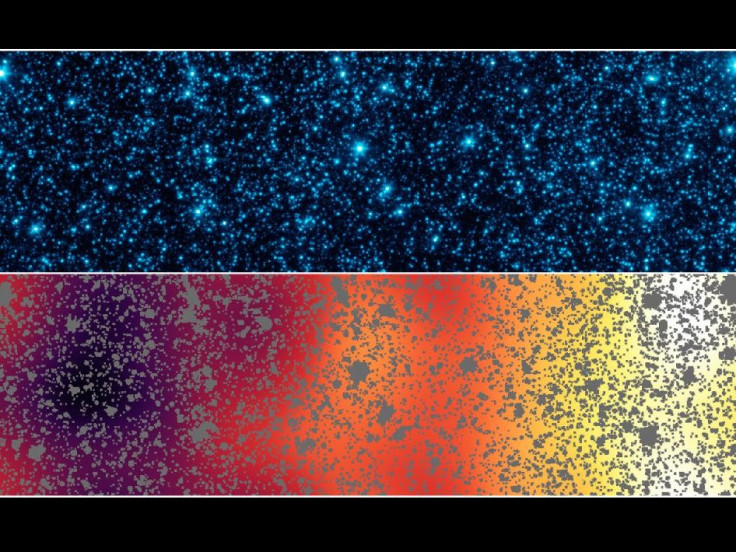Nasa Scientists Discover Mysterious Light From First Objects in Universe

Scientists from Nasa have detected a faint lumpy glow given off by the very first objects in the universe with the help of the Spitzer Space Telescope.
Scientists found this when they analysing remote pattern of light in the universe. They used a unique technology to subtract all the light emitted by the stars and galaxies in the images. Rather than finding a black, empty patch of sky, they were stunned to find faint patterns of light in the images.
After analysing this mysterious light, scientists found that this light came from the first objects of the universe. They believed this first object could have probably originated at the time of the Big Bang.
The universe formed roughly 13.7 billion years ago in a fiery, explosive Big Bang. With time, it cooled and, by around 500 million years later, the first stars, galaxies and black holes began to take shape.
Astronomers believe that some of that "first light" might have taken travelled billions of years to reach the Spitzer Space Telescope. The light would have originated at visible or even ultraviolet wavelengths and then because of expansion of the universe, the infrared wavelength is detected recently by Spitzer.
Astronomers are now planning to study more about our galaxy. They are planning to explore more patches of sky in the future to gather more clues hidden in the light of this ancient era.
"These objects would have been tremendously bright," said Alexander Sasha Kashlinsky, astronomer at Nasa's Goddard Space Flight Center, in a statement.
"We can't yet directly rule out mysterious sources for this light that could be coming from our nearby universe, but it is now becoming increasingly likely that we are catching a glimpse of an ancient epoch. Spitzer is laying down a roadmap for Nasa's upcoming James Webb Telescope, which will tell us exactly what and where these first objects were."
"This is one of the reasons we are building the James Webb Space Telescope," said Glenn Wahlgren, scientist at Nasa Headquarters in Washington. "Spitzer is giving us tantalising clues, but James Webb will tell us what really lies at the era where stars first ignited."
© Copyright IBTimes 2025. All rights reserved.





















